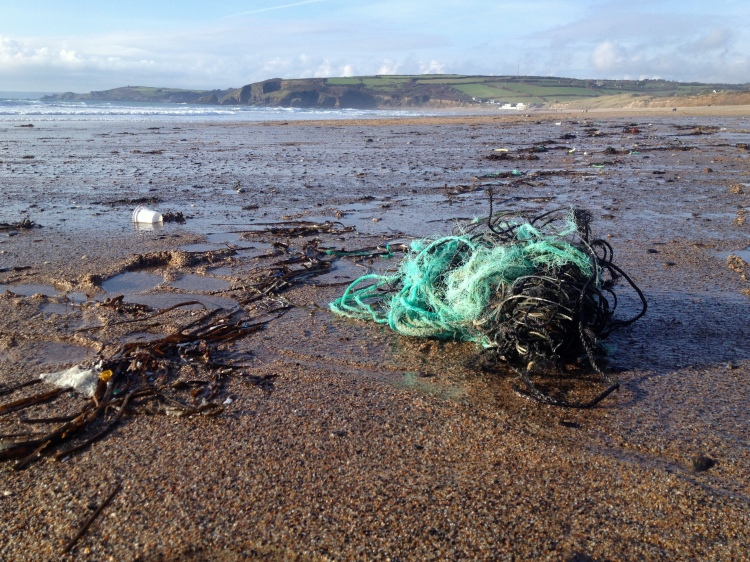


Last Sunday we made the trek to Sennen Cove beach in the far west of Cornwall. I have not been in the water for weeks due to the windy weather (and it might be a few weeks before conditions improve), so the only way to get my fix is by going beach combing… With strong westerlies, this spot jutting out into the Atlantic seemed a safe bet, although when we arrived the strandline appeared quite sparse and I did not have hope of finding much. A single find by my eagle-eyed son however made the trip all worth it!
The photos above show the amphipod Phronima sedentaria inside its home, a hollowed-out salp. These small crustaceans use their claws to carve a home out of their barrel-shaped gelatinous host. This offers protection, and a space to rear their young. They occur worldwide in the open sea and are believed to vertically migrate from depths up to a kilometer to the surface each night. Although it was still actively wriggling about, it was essentially doomed after being washed up, so it was taken back in a margarine container filled with seawater and handed over to David Fenwick (www.aphotomarine.com) for further examination. He made some excellent photos of it, making clear why it provided inspiration for the ‘Alien’ movie! As I suspected from the size, this was a female, and brood was found in the salp tunic as well.






These things have been found before a few times in the UK (in Sennen and in the Scillies) but not commonly (4 records on the NBN Atlas and 0 on iNaturalist). I have recorded mine on the latter database (which means it can make its way to NBN as well). Let’s see what else the sea throws up this winter!






















 The weather has been awful lately (October in the UK, no surprise there) with lots of wind. A good time for some beach combing! I have not done much of that actually (
The weather has been awful lately (October in the UK, no surprise there) with lots of wind. A good time for some beach combing! I have not done much of that actually (




